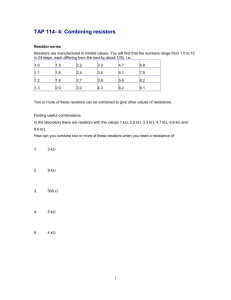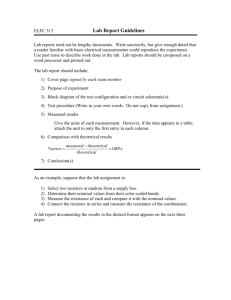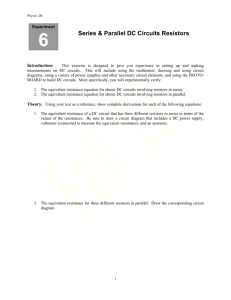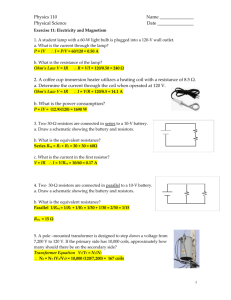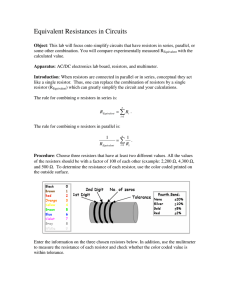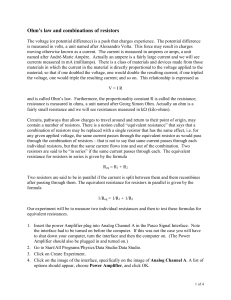TAP 114- 2: Resistors in series and parallel
advertisement
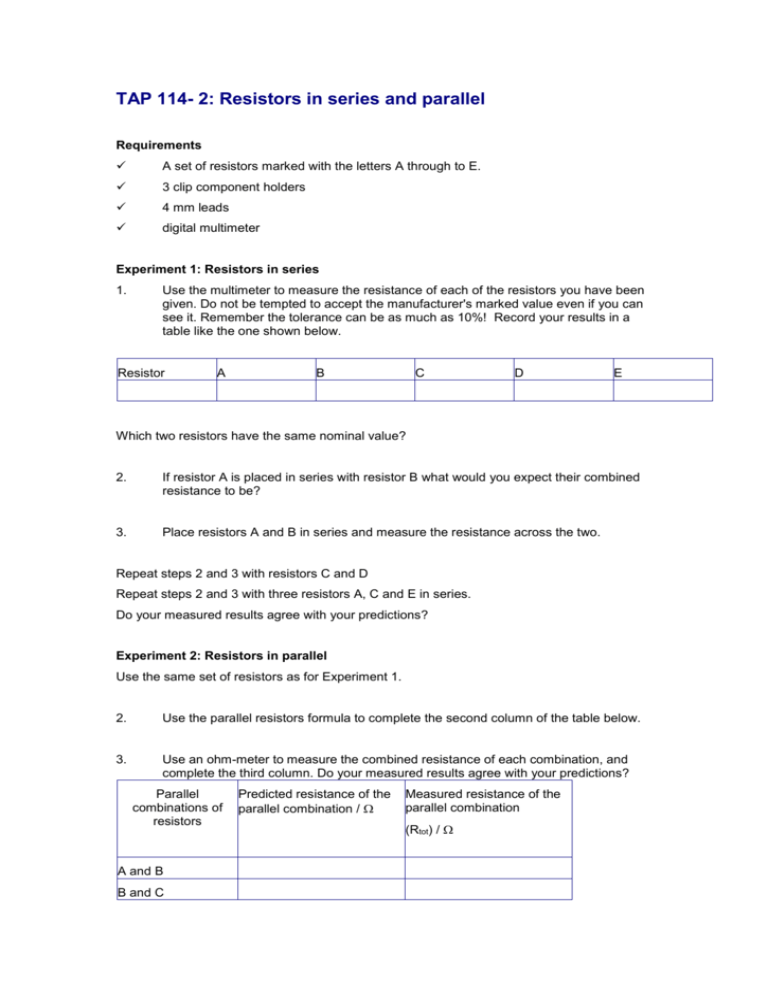
TAP 114- 2: Resistors in series and parallel Requirements A set of resistors marked with the letters A through to E. 3 clip component holders 4 mm leads digital multimeter Experiment 1: Resistors in series 1. Use the multimeter to measure the resistance of each of the resistors you have been given. Do not be tempted to accept the manufacturer's marked value even if you can see it. Remember the tolerance can be as much as 10%! Record your results in a table like the one shown below. Resistor A B C D E Which two resistors have the same nominal value? 2. If resistor A is placed in series with resistor B what would you expect their combined resistance to be? 3. Place resistors A and B in series and measure the resistance across the two. Repeat steps 2 and 3 with resistors C and D Repeat steps 2 and 3 with three resistors A, C and E in series. Do your measured results agree with your predictions? Experiment 2: Resistors in parallel Use the same set of resistors as for Experiment 1. 2. Use the parallel resistors formula to complete the second column of the table below. 3. Use an ohm-meter to measure the combined resistance of each combination, and complete the third column. Do your measured results agree with your predictions? Parallel combinations of resistors A and B B and C Predicted resistance of the parallel combination / Measured resistance of the parallel combination (Rtot) / C and D D and E A, B and C C, D and E Practical advice Each group requires access to a set of five resistors (Two of the resistors should have the same nominal value and come from the same batch.) Suggested values A = 300 k, B = 100 k, C = 75 k, D = 150 k, E = 100 k (For a large group of students a few sets will be needed). Technician's note: The resistor values are guides only and designed to make the 'sums' easier. Masking the resistor values stops students taking short cuts. However, for this experiment, working to 2 significant figures is appropriate for the purpose. Make sure the batteries in the multimeter are reasonably fresh. Students may need help using the multimeter if this is their first attempt. Alternative approaches The standard circuit for measuring resistance can be used with a power supply, ammeter and voltmeter. However, using the multimeter provides a quick method with fewer things to get in the way, especially for inexperienced students. External references This activity is taken from Advancing Physics Chapter 2, 120E
